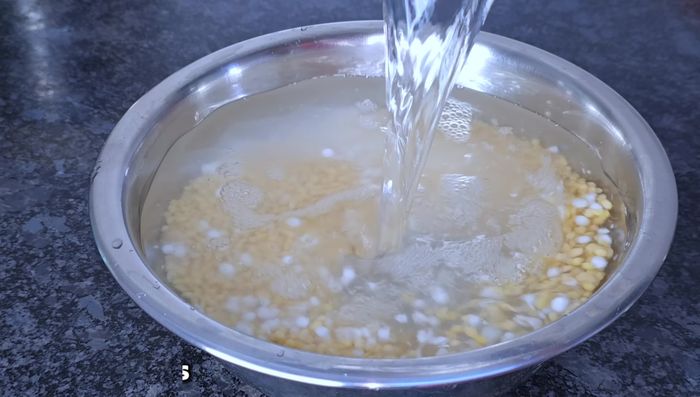Soft idlis, those pillowy clouds of fermented rice and lentil batter, are a beloved breakfast staple in South India. Their delicate texture and subtle tang make them a delightful start to any day. But achieving that perfect, melt-in-your-mouth softness can seem elusive. Many recipes fall short, resulting in idlis that are dense or gummy. This recipe, however, unlocks the secret to consistently fluffy, spongy idlis, reminiscent of those served in luxurious hotels. We'll explore the key techniques and ingredients that ensure your idlis achieve that coveted cloud-like consistency.
This recipe focuses on achieving hotel-style softness through careful batter preparation and steaming techniques. We'll delve into the importance of fermentation time, the ideal grinding consistency, and the precise steaming method to guarantee perfect results every time. Ready to transform your breakfast routine and experience the joy of unbelievably soft idlis? Let's move on to the detailed, step-by-step process.
Tools Needed
- Bowl
- Mixie jar
- Idli plates
- Idli steamer
Ingredients
- Gram flour: 1 cup
- Ghee: 1/4 cup
- Stuffed rice
- Idli rava (fine): 1/2 cup
- Salt: 1 teaspoon
- Soybeans: 1 tablespoon
Step-by-Step Instructions
Step 1. Prepare the Batter
- Soak stuffed rice and idli rava separately for 4 hours. Do not soak for longer than 4 hours to avoid hard idlis.
- Soak soybeans separately for 4 hours.
- Drain all excess water from the soaked rice, rava, and soybeans.
- Grind soaked soybeans, rice, and idli rava in a mixie with enough water to create a smooth batter. Add water gradually to achieve a fine consistency.




- Squeeze out all excess water from the batter using your hands.
- Combine the squeezed batter with the gram flour, mix thoroughly with your hands, and let it ferment at room temperature for 8 hours.


Step 2. Ferment and Adjust
- After 8 hours, check the fermented batter for air bubbles. Add salt and a little water if necessary, and adjust consistency.

Step 3. Steam the Idlis
- Grease idli plates with ghee or oil. Pour batter into the molds, filling them ¾ full.
- Steam the idlis in a boiling steamer for 10 minutes.
- Check if the idlis are cooked by gently pricking with a wet spoon. Remove from steamer and let sit for a couple of minutes before removing from molds.



Read more: Easy Indian Bread Pudding Recipe: A Simple Dessert
Tips
- Using fine idli rava results in perfect idlis.
- Adding soybeans makes the idli batter well-drained and fluffy.
- Mix the batter well with your hands for proper fermentation.
- Ferment the batter at room temperature for optimal results. Do not refrigerate immediately after mixing.
- Steam the idlis only after the water is boiling to avoid hard idlis.
- Don't overcook the idlis; about 10 minutes is enough.
Nutrition
- N/A
FAQs
1. Why are my idlis hard and dense?
This often happens due to over-fermentation, insufficient fermentation, or using too much batter in the idli moulds. Ensure your batter is fermented perfectly (until doubled in volume), and don't overfill the moulds.
2. Can I use a different type of rice or lentil?
While the recipe specifies certain types for optimal results, you can experiment. However, using significantly different varieties might affect the texture and taste. Start with small substitutions to see how it affects your idlis.
3. How long can I store the leftover idli batter?
Store the batter in an airtight container in the refrigerator for up to 2 days. Ensure it's properly fermented before using it. Discard if it shows any signs of spoilage (unpleasant smell or mold).
With this recipe, achieving perfectly soft and fluffy idlis, just like those served in upscale hotels, is now within your reach. Enjoy the satisfying experience of creating this South Indian breakfast delight, impressing your family and friends with its exceptional texture and taste. Happy cooking!
